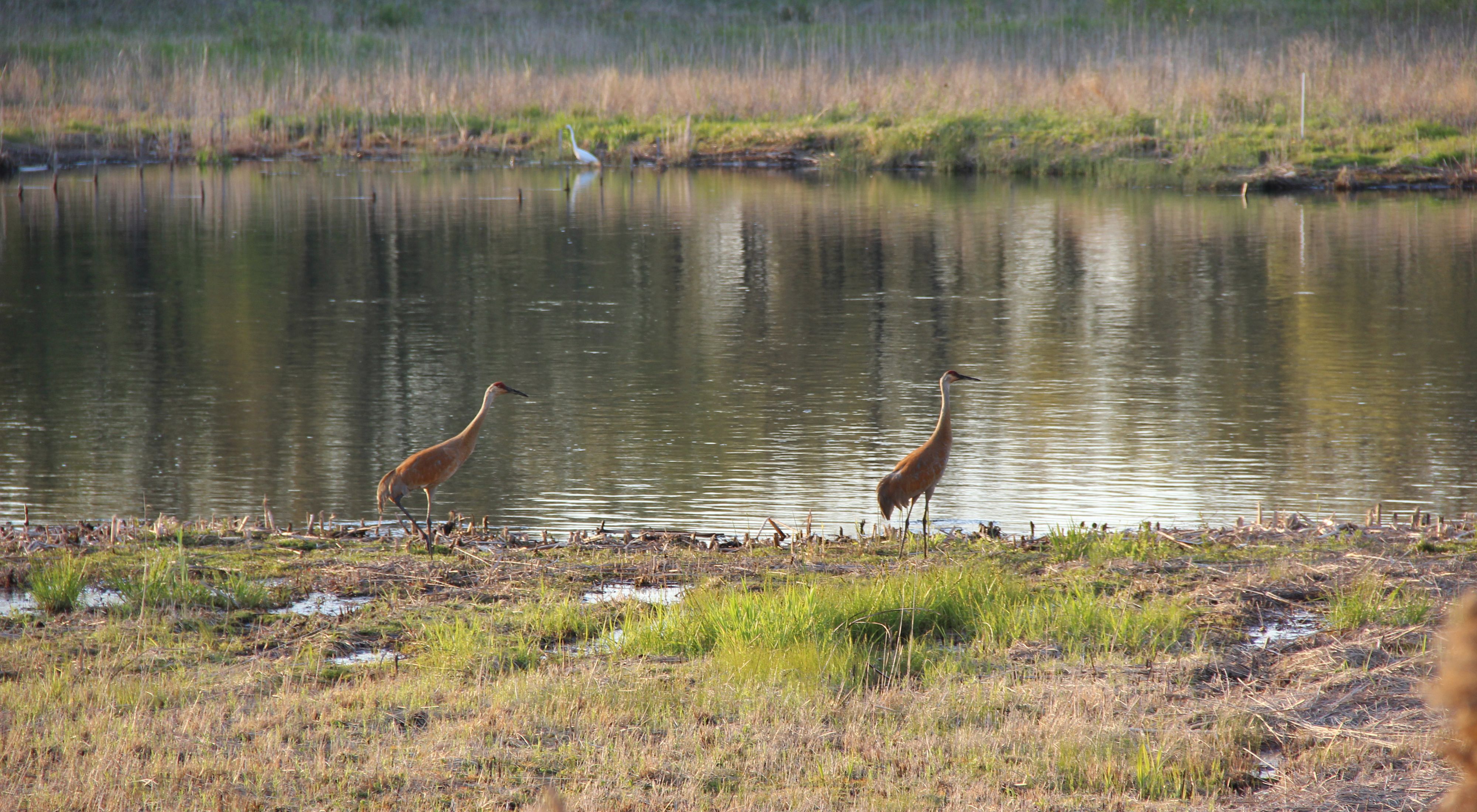What to See
Trail Network: The Conservation Area’s trail starts at the walk-through, zig-zag gate. Looping through all the trails makes for a 3.3-mile hike, consisting of a mostly gravel track. A map of the site is at the gate and there are several interpretative signs throughout. Hikers are cautioned to stay on the trail as there is lots of poison ivy in the area.
Dune and Swale Habitat: within the variety of habitats found on the site is a rare habitat—dune and swale (or ridge and swale as some geologists prefer). Prior to development in the area, more than 9,000 acres of this habitat existed. To date, approximately 1,000 acres has been saved for future generations. Worldwide, it is estimated there are only 15,000 acres left of this ecological wonder, primarily around Lakes Michigan and Huron.
Viewed from above, this habitat is very distinctive—like a piece of corduroy has been stitched into the land.
Within the Conservation Area are three relatively undisturbed tracts of dune and swale habitat that have survived more than 100 years of heavy industrialization.
On the ridgelines another rare habitat can be found: oak savanna. Large gaps in the overhead tree canopy create a mix of sun and shade with prairie grasses and wildflowers, including wild blue lupine, growing underneath. At one time it is estimated that much of our area was covered in black oak savanna. Now less than 2 percent remains in the Midwest.
Grand Calumet River Restored: Hiking through the Conservation Area includes expansive views of the Grand Calumet River. Prior to the passing of the Clean Water Act, this water body was once known as one of the dirtiest rivers in the United States. Degradation was caused by industrial wastes and sewer water being released untreated into river.
This river stretch—from Kennedy Avenue to Cline Avenue—had remediation completed in 2015 when more than six feet of sediment was removed, remaining sediment was capped, and a thick layer of sand was added. Riverine wetlands and nearshore areas were also restored with native plants after huge stands of non-native common reed and cattails were removed. Ongoing monitoring shows the river is coming back to life.
While there is still much work to be done in other parts of the 13-mile waterway, its revival to date is testament to how partnerships, treaties, the federally funded Great Lakes Restoration Initiative and the Clean Water Act can all work together to overcome obstacles and reinstate habitat that support native fish and wildlife populations.
Today, the presence of bald eagles, wading birds, ducks, egrets, trumpeter swans, largemouth bass, and even certain mud-loving creatures called benthic organisms, indicate that the river is on the mend. More information on the river clean-up can be found on the EPA website.
Ecological Restoration of Adjacent Habitat
The Grand Calumet River provides a logical corridor for connecting habitat in the Conservation Area and all along its length. This connected landscape provides wildlife with a home that allows them to gather food, select mates and successfully reproduce. Native plants also need good habitat to thrive without the threat of being overridden by invasive species like common reed, purple loosestrife, and glossy buckthorn.
Since 2009, and some acreages even longer, crews have consistently worked through the riverine wetlands, ridges and swales to control invasive species. Early on crews were faced with walls of common reed and buckthorn. Today, efforts primarily center around finding small or individual populations of certain invasive species to keep them from getting established.
